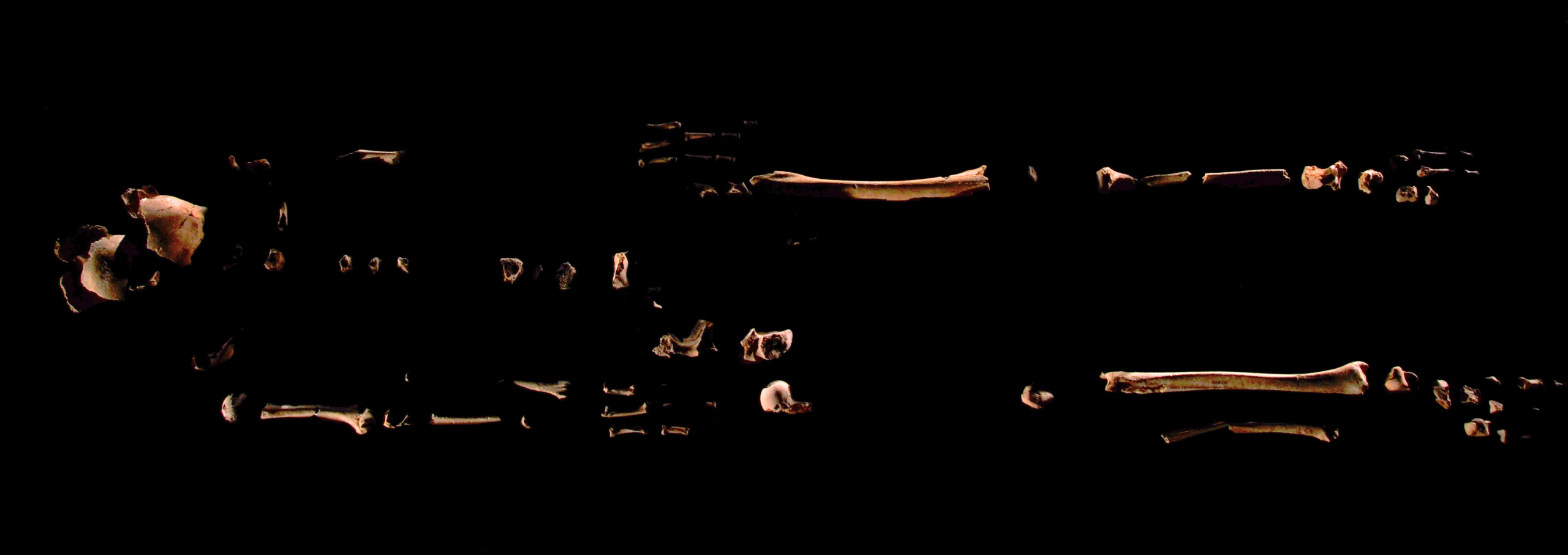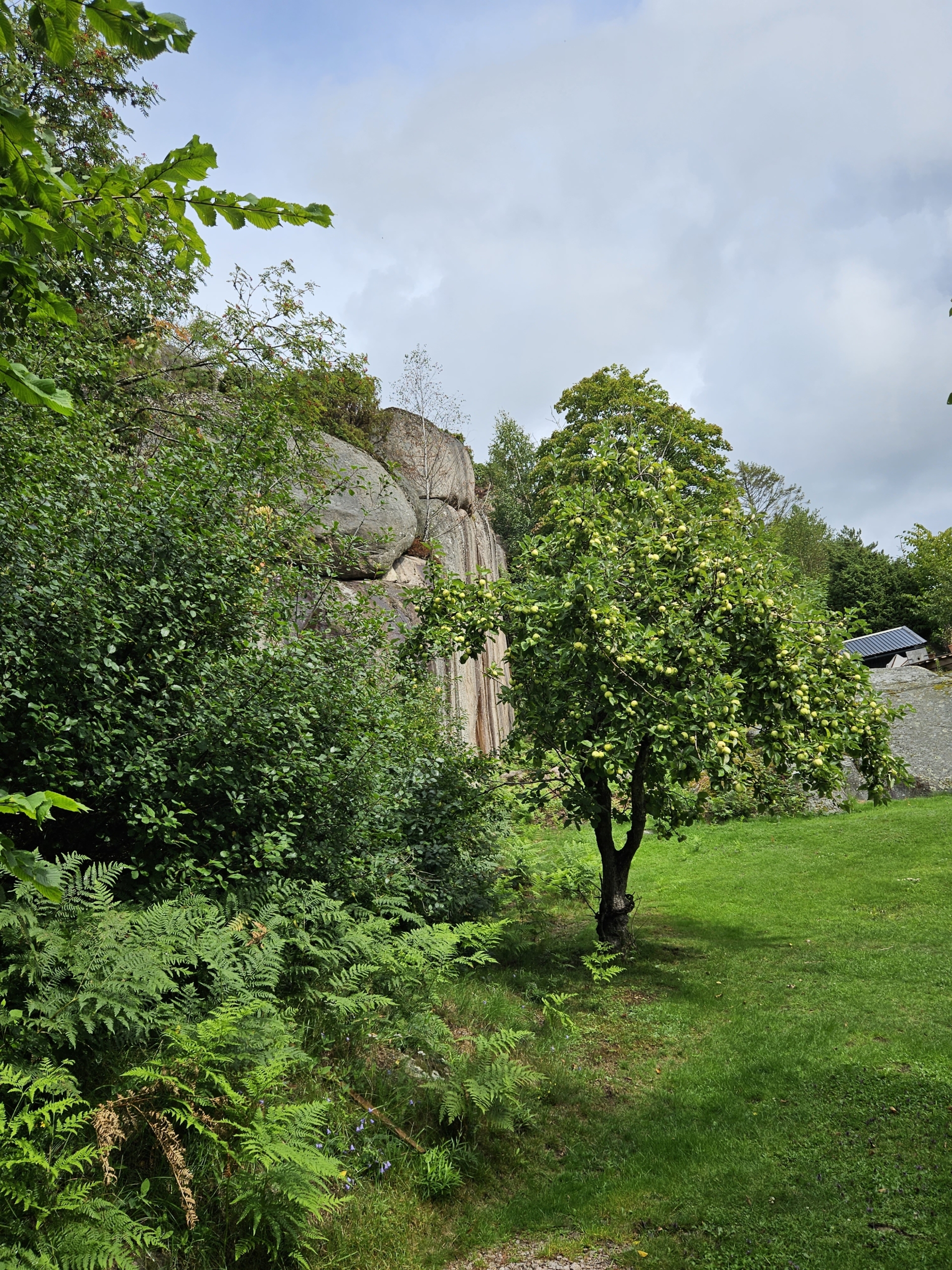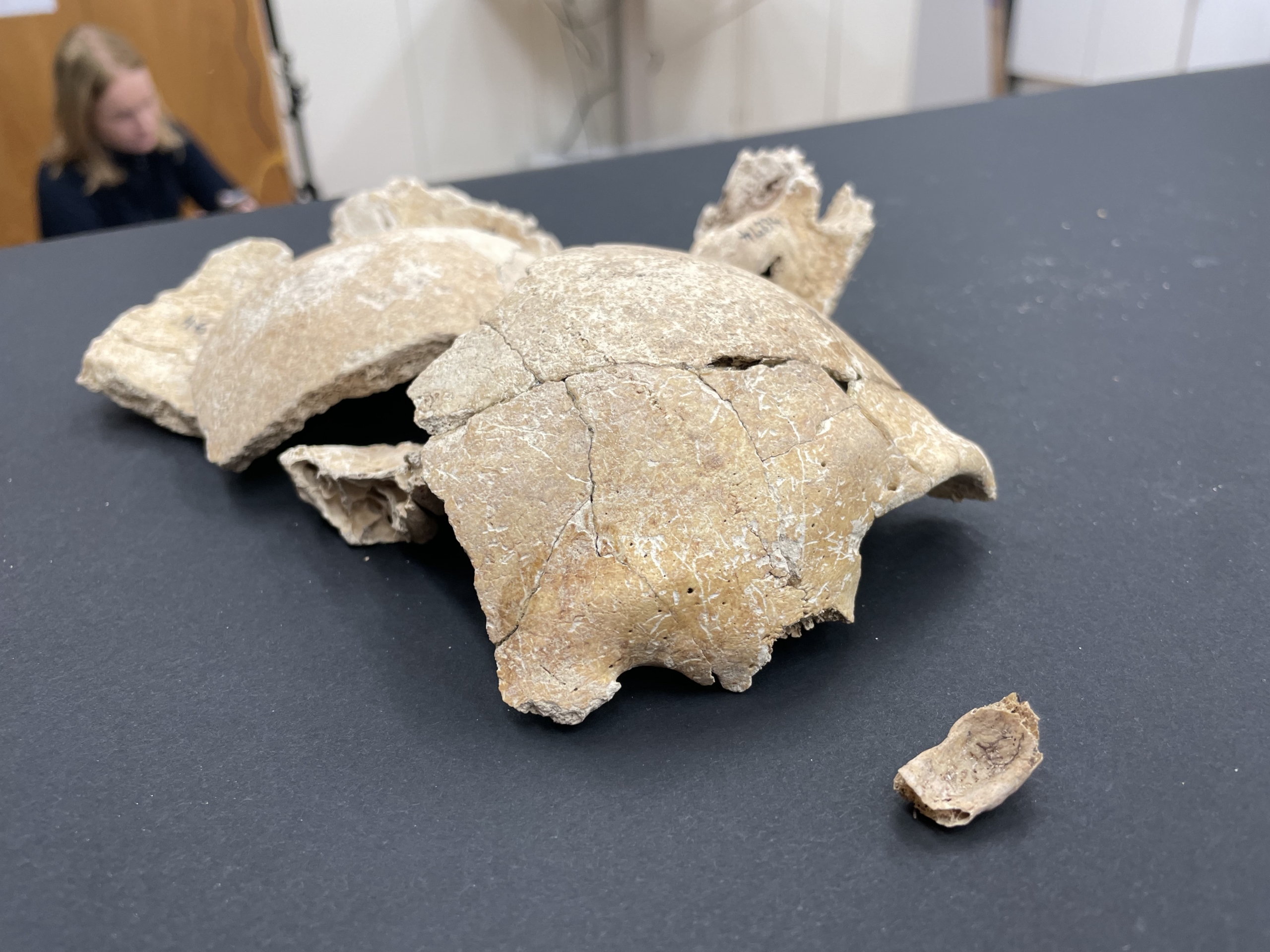On display 5 nov 2023–30 april 2024
The woman from Österöd
Her skeleton is one of the oldest and most complete found in Scandinavia. Now, she is on display at the Gothenburg City Museum for a limited time.

Her skeleton is one of the oldest and most complete found in Scandinavia. Now, she is on display at the Gothenburg City Museum for a limited time.
The year was 1903, stonecutter Karl Ahl from Österöd in Bohuslän discovered a human skeleton while digging in a shellbank. However, it took over 100 years before the likely oldest and most complete skeleton in the country ended up at the Gothenburg City Museum. Why did it take so long? And who really was the Woman from Österöd?
The discovery of the skeleton from Österöd in Bro on Härnäset in Bohuslän has a peculiar history. In earlier times, it was common to gather material for chicken feed production from shell banks. When the stonecutter Karl Ahl from the Österöd farm was digging in such a shell bank in 1903, he suddenly found a skeleton. He then covered the remains, which would lay forgotten in the shell gravel for another 24 years.

Photo from the discovery site, summer 2023. On the right side of the picture, you can see the homestead Ljungby. On the left, you can see the rocky slope next to which the skeleton was found for the second time in 1933, probably around where the fruit tree is growing. Photo: Else-Britt Filipsson
The dark, rich streak that Karl Ahl observed was the remains of a decomposed human body that has left traces behind. Archaeologists excavating burial grounds often notice dark discolorations and fertile soil, which are the remnants of the body. Karl Ahl interpreted it as if the body had been buried standing, as the skull was found at the top. Probably, the body was buried in some form of a seated position. Millennia after Österöd Woman’s death, there are several examples of people being buried sitting or crouching, likely tied in a seated position and then placed in a pit.
It would take until 1933 before archaeologist Johan Ahlin took action and excavated the skeleton. The bones were found to be disordered, some were broken, and the skull was damaged. Ahlin carefully collected all the bones, packaged them with care, and sent them to the Gothenburg Archaeological Museum (which became part of the Gothenburg City Museum in 1993). Despite the damage to the bones, they were well-preserved, and the skeleton was reasonably complete.
The bones were found to be disordered, some were broken, and the skull was damaged.
Many years passed again, and in the late 1940s, the bones were sent to the Department of Anatomy in Lund for a more thorough examination. However, no examination took place, and the bones were left in storage outside Lund. The Gothenburg Archaeological Museum made a later attempt to trace the missing bones, but without success. It wasn’t until 2007 that researchers Torbjörn Ahlström from Lund University and archaeologist Karl-Göran Sjögren from the University of Gothenburg found the bones while conducting research on strontium isotopes in human bones. This type of analysis can reveal where an individual grew up and possibly moved. Together, they began working on the puzzle of the Österöd find. They identified the bones, which could now be returned to the Gothenburg City Museum.

Photo: Karolina Kegel
So, what do we know today about the skeleton that lay hidden in a shell bank below a cliff in Bohuslän for thousands of years, was unearthed, and then forgotten for almost 100 years? Carbon-14 analysis indicates that the skeleton is around 10,000 years old, making it one of the oldest discoveries of such a complete skeleton from the Mesolithic period in the Nordic region. Osteologist Torbjörn Ahlström conducted a thorough analysis of the skeleton and concluded that it is that of a woman. The focus is primarily on the pelvis, brow ridges, and the shape of the eye socket to determine gender. The woman, now called Österöd Woman because that’s where she was found, has been relatively tall, approximately 170 centimeters, and healthy for her age.
Österöd Woman was around 70 years old when she died and was buried by the cliff in Bohuslän.

Österöd Woman’s skeleton is almost entirely complete. Here photographed without flash, out of consideration for the bones. Foto: Else-Britt Filipsson, Göteborgs stadsmuseum
Although her bones show some signs of wear and osteoarthritis, these are interpreted as normal age-related conditions. She likely experienced some stiffness in the neck and lingering effects from shin splints. An isotope test from a front tooth suggests that she probably grew up inland, not as close to the sea as her grave indicates. She seems to have consumed both marine and inland food. She may have moved through an area where it was most favorable to find resources depending on the season. Österöd Woman was around 70 years old when she died and was buried by the cliff in Bohuslän.
The location where the woman from Österöd was found, still consists of a shell bank. 10,000 years ago, the sea level was 40 meters higher than today due to the weight of the inland ice, so when the woman lived, this place was an island in the outer archipelago of Bohuslän. Probably, there wasn’t much vegetation here, and it was a barren island. People lived by fishing, hunting, nuts, and roots, likely navigating the archipelago with some type of boat. She was buried here, in a protected place on the eastern side of the island, with a rocky slope close to the west. However, why and how Österöd Woman died is still shrouded in mystery.